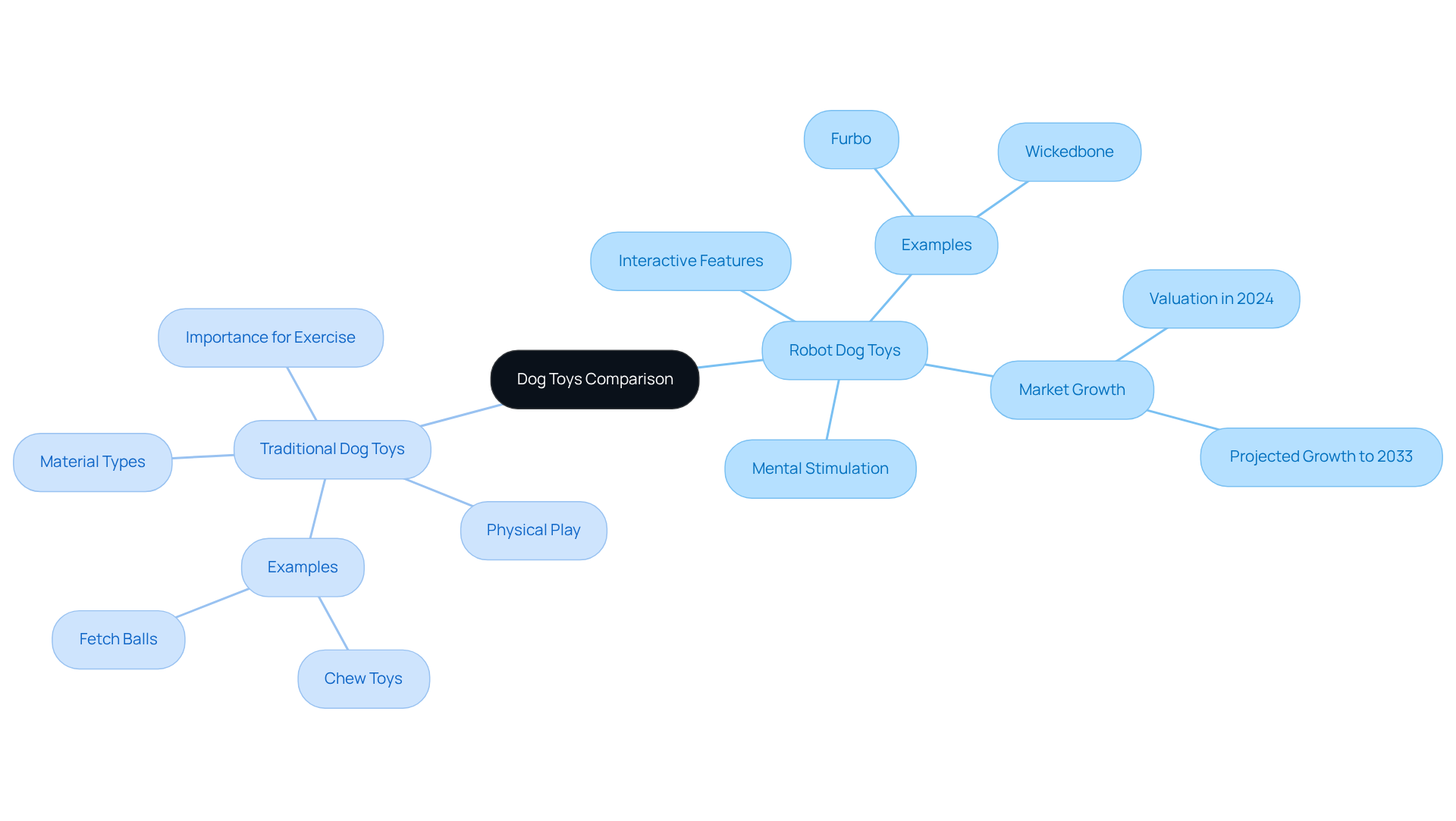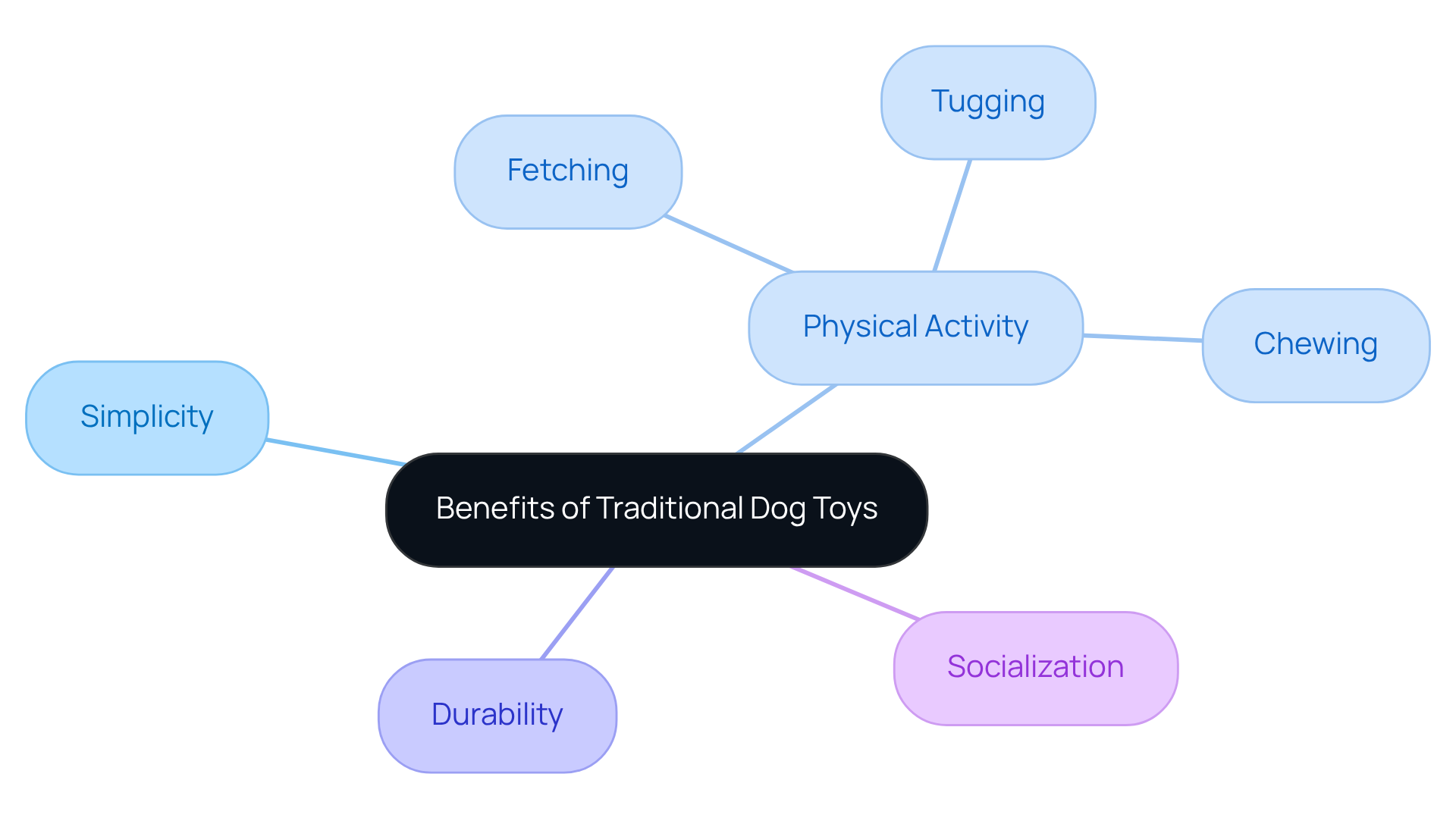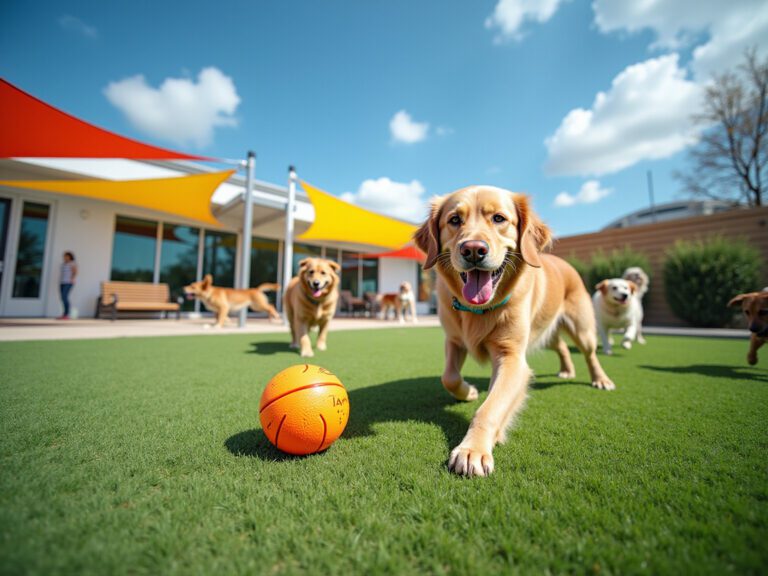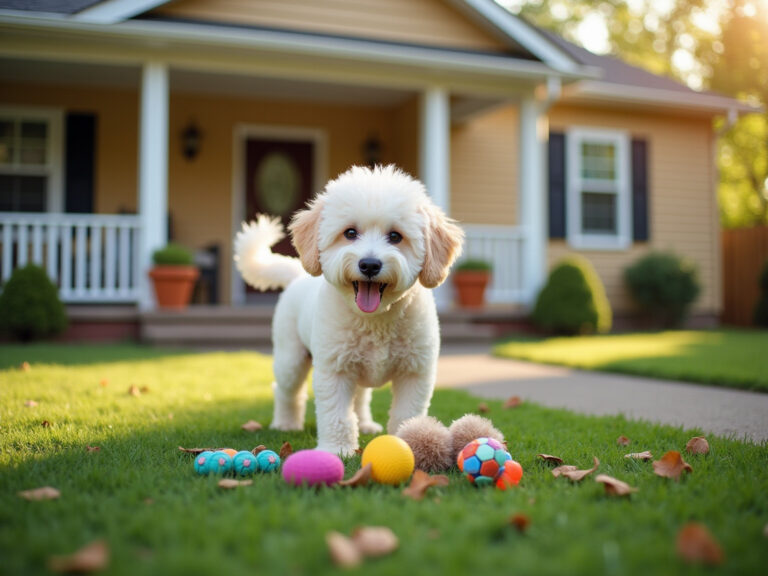Robot Dog Toy vs. Traditional Dog Toy: Key Differences Explained
Overview
When it comes to choosing the right toys for your furry family members, robot dog toys stand out from traditional options, primarily due to their interactive features. These innovative toys offer not just physical play but also mental stimulation and engagement, addressing your pet’s emotional needs. Imagine providing your beloved companion with a source of entertainment that alleviates boredom and anxiety through programmed responses and activities.
In contrast, traditional toys focus on essential exercise and instinctual behaviors, encouraging social interaction and physical activity. It’s crucial to recognize that every pet has unique needs, and understanding these can guide you in making the best choice for their well-being. At Adventure Den, we believe in nurturing environments that cater to these needs, ensuring your pets thrive emotionally and physically.
Consider how robotic toys can enhance your pet’s playtime experience, fostering a deeper bond between you and your furry friend. As you explore the options, remember that the right choice can lead to a happier, healthier pet. Let us help you create that nurturing environment for your beloved companions.
Introduction
The rise of technology has transformed the way our furry family members play, sparking a fascinating debate between robot dog toys and traditional options. While robotic toys offer interactive features that can engage and stimulate dogs mentally, traditional toys provide essential physical activity that caters to their natural instincts. As loving pet owners, we often find ourselves navigating this evolving landscape, striving to determine which type of toy best meets our pets’ needs.
Are the advanced capabilities of robot dog toys truly worth the investment, or do the tried-and-true benefits of conventional toys still reign supreme? It’s a question worth pondering as we seek to create a nurturing environment for our beloved companions.
Comparing Robot Dog Toys and Traditional Dog Toys: An Overview
Robot dog toys are truly groundbreaking electronic companions designed to mimic the actions of real animals. They often come equipped with interactive features like movement, sounds, and programmed responses that can delight your furry family members. These innovative robot dog toys can captivate dogs in unique ways, providing mental stimulation and joy, which is especially beneficial for energetic pets or those dealing with separation anxiety. For instance, robotic devices like the Furbo and Wickedbone offer treat-dispensing capabilities and remote engagement, allowing you to connect with your pets even when you’re away from home. Many pet owners have shared heartwarming testimonials about how these products keep their dogs engaged and alleviate boredom.
In contrast, traditional dog toys are typically crafted from materials such as rubber, plush, or rope, focusing on physical play and interaction without any electronic components. These toys, including chewable items and fetch balls, cater to dogs’ natural instincts for chewing and retrieving, promoting essential physical exercise and social interaction. Did you know that dogs can roam up to 20 miles daily if given the chance? This highlights the importance of providing stimulating toys that meet their exercise needs.
Understanding the differences between robotic and traditional toys is crucial for pet owners who want to choose the best option for their beloved dogs. While robotic toys can offer advanced engagement and entertainment, traditional items are still vital for physical activity and instinctual play. The market for robot dog toys is expected to grow significantly, with projections estimating a valuation of USD 600 million by 2033. This indicates a rising interest in interactive pet products. Furthermore, by 2025, the market share of robot dog toys is anticipated to represent a substantial portion of this growth. As pet owners increasingly seek innovative ways to enhance their dogs’ playtime, the decision between robotic and traditional toys will depend on the unique needs and preferences of each pet. Recent events, such as a blessing ceremony for robotic puppies in Japan, further illustrate the growing acceptance of mechanical companions in our society.

Advantages of Robot Dog Toys: Engagement and Interaction
Robot dog toys provide a wealth of benefits, particularly through their interactive features that respond to your furry family member’s movements. These delightful robot dog toys are equipped with sensors, allowing them to react to movement, sounds, and touch, which creates an engaging play experience that captivates pets. Such involvement is crucial for alleviating boredom and reducing anxiety, especially for pets that may spend long hours alone.
Research indicates that robot dog toys can significantly uplift a dog’s mood and behavior, fostering a sense of companionship and comfort. For instance, engaging with robotic canines can trigger the release of oxytocin, the ‘bonding hormone,’ which enhances emotional well-being. Furthermore, many of these robot dog toys are specifically designed to promote physical activity, transforming exercise into a fun and stimulating experience.
By blending play with movement, these toys not only entertain but also contribute to the overall well-being of your canine companion, encouraging a healthier lifestyle. As experts suggest, when selecting the right interactive toy, it’s essential to consider your dog’s age, size, and activity level to maximize engagement and benefits. After all, nurturing your pet’s happiness and health is a priority we all share.
Benefits of Traditional Dog Toys: Simplicity and Physical Activity
Conventional dog playthings are cherished for their simplicity and effectiveness in promoting physical activity. Toys like balls, ropes, and chew items inspire our furry family members to engage in natural behaviors such as fetching, tugging, and chewing. These activities not only provide essential exercise but also help strengthen the bond between pets and their owners during playtime. Did you know that dogs can cover approximately 20 miles a day when allowed to roam freely? This highlights just how vital physical activity is for their overall well-being. As dog trainer Karen Pryor wisely states, ‘Exercise is the key to a well-behaved dog,’ underscoring the crucial role of physical activity in ensuring a dog’s happiness and health.
Moreover, conventional toys are often more durable and affordable than robot dog toys, making them a sensible choice for many pet owners. For instance, a well-crafted rubber ball can last for months, while robotic devices may require frequent replacements. Furthermore, classic play items such as frisbees and tug ropes not only promote exercise but also facilitate interactive play, which is essential for a dog’s socialization and emotional well-being. This aligns beautifully with Adventure Den’s commitment to providing a nurturing environment where canines can engage in physical activities and socialize with other pets, ensuring they thrive in every aspect of their lives.

Drawbacks of Robot and Traditional Dog Toys: A Critical Analysis
Robot dog toys can provide engaging interactive features, but they also come with their own set of challenges. These include higher costs, potential technical malfunctions, and the need for batteries or charging. Additionally, some dogs may feel frustrated with toys that do not respond as expected. In contrast, traditional canine toys are often more affordable, yet they might lack the mental stimulation that certain dogs crave, leading to boredom and potentially destructive behaviors.
Safety is a significant concern when it comes to conventional dog toys. Experts warn that many traditional toys can pose risks if they break apart or contain small parts that could be swallowed, resulting in serious health issues. For example, the average treatment cost for foreign object ingestion in pets is a staggering $1,316.12, highlighting the financial implications of such incidents. Real-life stories illustrate these dangers; dogs have suffered gastrointestinal blockages after swallowing pieces of broken toys. Moreover, items made from non-durable materials can quickly become hazardous, as they may splinter or shatter, creating choking hazards.
Veterinary professionals recommend that pet owners supervise playtime and promptly replace any damaged items to minimize these risks. By understanding the potential dangers associated with conventional pet toys, you can make informed choices that prioritize your furry family members’ safety and well-being. Remember, a nurturing environment is essential for their happiness and health.

Choosing the Right Toy for Your Pet: Suitability and Lifestyle Considerations
Selecting the right toy for your furry family member involves understanding their unique needs and your lifestyle. For energetic canines that flourish with physical activity, conventional playthings are often the best choice, as they encourage robust play and help maintain a healthy weight. These toys can include fetch balls, tug ropes, and frisbees, promoting outdoor activity and bonding time with you. Did you know that canines maintaining a lean body weight from puppyhood onward live nearly two years longer than their overweight counterparts? On the other hand, dogs prone to boredom or anxiety may benefit more from a robot dog toy, which provides interactive features that stimulate their minds and reduce destructive behaviors. Engaging toys like a robot dog toy keep your dog mentally stimulated, lowering the chance of behavioral issues like excessive barking or chewing, which is essential for their overall health.
When weighing the options between robots and conventional toys, consider your budget and the durability of the choices available. It’s crucial to select items that can withstand your dog’s play habits, ensuring they remain safe and enjoyable. Additionally, observing your dog’s behavior can help you choose toys that align with their preferences. For instance, dogs that enjoy solving problems may be drawn to engaging toys, while those that favor physical activities might prefer traditional options.
Pet psychologists emphasize the importance of assessing a dog’s needs when selecting toys. Understanding your dog’s play style and preferences can lead to a more enriching play experience, strengthening the bond between you and your pet. Regularly changing toys can also help maintain your dog’s interest and engagement. By tailoring toy choices to your dog’s individual characteristics, you can enhance their mental and physical well-being, ensuring they stay happy and engaged. Moreover, it’s essential to regularly check toys for wear or damage to create a safe play environment.

Conclusion
The exploration of robot dog toys versus traditional dog toys offers a wonderful array of choices for pet owners who want the best play experiences for their furry family members. Robot dog toys bring interactive features that can truly engage and stimulate dogs mentally, while traditional toys are essential for promoting physical activity and encouraging natural behaviors. Understanding these differences is crucial for making informed choices that cater to the unique needs of your beloved pets.
Key insights from this comparison reveal the benefits of both types of toys. Robot dog toys can alleviate boredom and anxiety with their engaging responses, while traditional toys excel in fostering physical exercise and strengthening the bond between pets and their owners. Each option has its drawbacks; robotic toys can be more expensive and may malfunction, whereas traditional toys sometimes pose safety risks if not monitored closely.
Ultimately, the decision between a robot dog toy and a traditional option should be guided by the specific needs and lifestyle of your pet. By thoughtfully considering factors such as your dog’s energy level, play style, and safety, you can enhance your companion’s well-being. Encouraging a balance of both types of toys can lead to fulfilling playtime experiences, ensuring that your dogs remain happy, healthy, and engaged. Remember, your furry family members deserve the best, and with a little care, you can create a nurturing environment that supports their joy and vitality.
Frequently Asked Questions
What are robot dog toys?
Robot dog toys are electronic companions designed to mimic real animals, featuring interactive elements like movement, sounds, and programmed responses to engage dogs.
How do robot dog toys benefit dogs?
They provide mental stimulation, alleviate boredom, and reduce anxiety, especially for energetic pets or those experiencing separation anxiety.
Can you give examples of robot dog toys?
Examples include the Furbo and Wickedbone, which offer treat-dispensing capabilities and remote engagement features.
What are traditional dog toys made of?
Traditional dog toys are typically made from materials such as rubber, plush, or rope, and focus on physical play without electronic components.
What activities do traditional dog toys promote?
Traditional toys cater to dogs’ natural instincts for chewing and retrieving, promoting essential physical exercise and social interaction.
Why is it important to provide stimulating toys for dogs?
Dogs can roam up to 20 miles daily, so providing stimulating toys is crucial to meet their exercise needs and prevent boredom.
What is the expected market growth for robot dog toys?
The market for robot dog toys is projected to grow significantly, with an estimated valuation of USD 600 million by 2033.
How do robot dog toys enhance a dog’s mood and behavior?
They can trigger the release of oxytocin, the ‘bonding hormone,’ which enhances emotional well-being and fosters a sense of companionship.
What factors should be considered when choosing an interactive toy for a dog?
It’s essential to consider the dog’s age, size, and activity level to maximize engagement and benefits from the toy.
What recent cultural event highlights the acceptance of robotic pets?
A blessing ceremony for robotic puppies in Japan illustrates the growing acceptance of mechanical companions in society.







